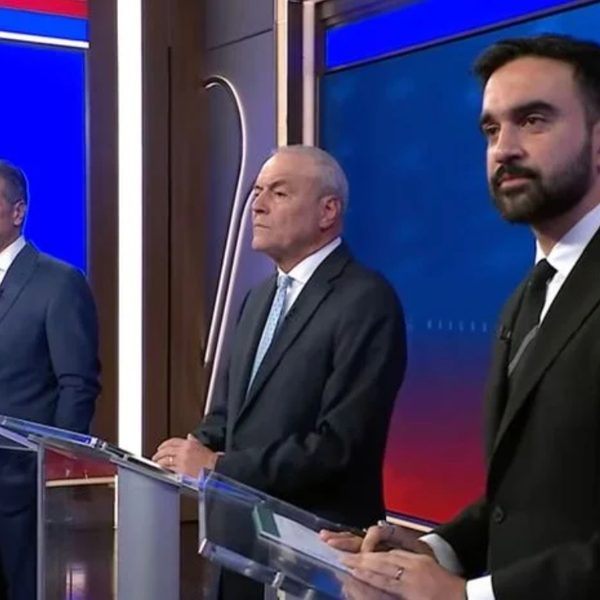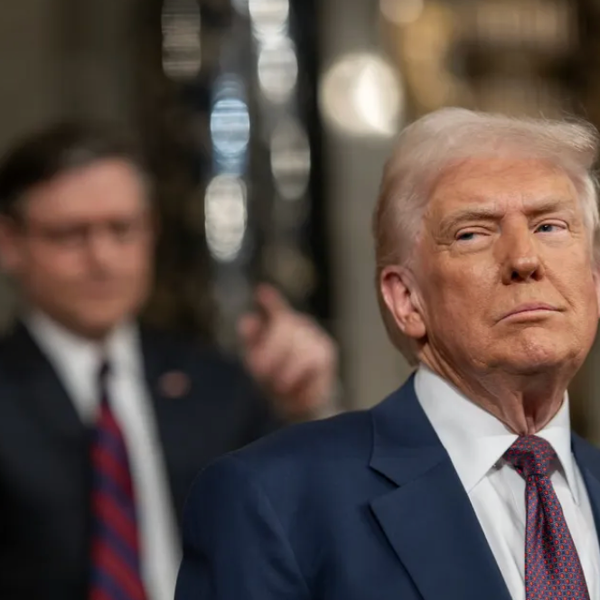While not the worst proposal, the budget serves as a political football and shirks the tough decisions staring us in the face.
President Obama’s recent budget is the “numbers” version of his State of the Union speech. It mirrors the speech almost exactly. Of course it is a political budget. What else could anyone possibly have expected? The intent is to emphasize a few key themes, give the president’s general election opponents no handle to grab on to, and to exit stage right as soon as possible. It will be successful in all of these respects.
But it is entirely a placeholder. It moves generally in a direction the vast center of the electorate will view as right — if they care. It has a few interesting details and provides his general election opposition with no new attack points. It is not transformative in any respects. It offers no significant guidance as to how President Obama will conduct his second term. And it won’t be in any serious way the basis for the actual 2013 budget: Congress won’t get its act together to pass a 2013 budget. That would be too much like actually doing its job. So we will have another series of continuing resolutions. Excepting a few ritual attack lines from the left and right, Obama’s budget will quickly disappear from sight, if it hasn’t already. (After all, 24 hours have passed.) I wish the world and this budget were different, but we are where we are.
The print media have obviously seen it as a rationale for restating whatever their editorial positions were already. The Times, predictably, called it a “clear and welcome contrast to the slashing austerity — and protect-the-wealthy priorities.” The Wall Street Journal opens by calling the budget “a brilliant bit of misdirection” and closes by calling President Obama’s fiscal direction as “the worst in modern history.” The Washington Post termed it “a serious, if inadequate, effort to put America on a sustainable path.” If the reception of the budget is utterly predictable, its results will be even more so.
What’s the message? The headline numbers are $2.9 trillion (receipts), $3.8 trillion (expenditures), $900 billion (deficit), 5.5 percent (deficit as a percent of GDP), and 77.4 percent (debt as a percent of GDP). Over 10 years, the deficit falls from 5.5 percent of GDP to 2.8 percent and debt stays at 76 to 78 percent. So the president is not proposing any radical change in fiscal direction, and the big numbers either decline modestly in the right direction (deficit going down) or stay constant (debt as a percent of GDP). The Wall Street Journal to the contrary, these headline numbers are a reasonable fiscal policy — not the best imaginable but not awful. At the very least, it is simply wrong to try to bring the deficit down rapidly in a still fragile economy.
The two substantive messages are entirely predictable, emphasizing tax fairness and the middle class. The president proposes a long list of tax rate increases on the top 5 and 1 percent. And he underlines his deep devotion to the middle class. But — as the joke says — these sardines are for trading and debating, not eating. Barring another political revolution, the tax increases aren’t going to happen. Nothing the president proposes — or right now could propose — is even close to enough to change the deep structural issues facing the U.S. economy.
Robert Samuelson says that “this is a formula for governmental failure and generational unfairness.” Jeffrey Sachs — whose new book The Price of Civilization will be the topic of an upcoming Next American Economy breakfast — says, “The larger truth is that a shrinking federal government will fail to meet America’s skill, education, and infrastructure challenges.” I agree completely. There are major transformational issues facing us. They are all central to what the next American economy will be and carry major budget implications. None of them are addressed in this budget. Here are five such issues:
- Fiscal policy: To be clear, I believe President Obama’s fiscal policy has been largely correct, but the long-run fiscal policy we need and the government we need cannot both be achieved within the world view and assumptions of this budget.
- Government spending: Look at tables S-6 and S-7 of the president’s budget. Table S-6 shows you that as a percent of GDP (1) total spending declines from 23.3 percent to 22.8 percent; (2) interest payments rise from 1.5 percent to 3.3 percent; (3) mandatory entitlement spending rises from 14 percent to 14.4 percent; (4) all of the rest of government — defense and domestic spending — falls from 7.7 percent to 5 percent; and (5) domestic spending falls from 2.5 percent to 1.7 percent. Table S-7, continuing the theme, shows actual expenditures in constant dollars: (1) interest payments increase 161 percent; (2) entitlement payments increase 17 percent; and (3) all other domestic spending falls 18 percent. Our fastest-growing program is interest payments. Our government is now mostly about paying interest and sending entitlement checks to the elderly. Nothing goes to all of the other functions of the government. If this trend actually takes place — and it could — we will not make any of the national investments I believe are critical, and we will see an even faster erosion of confidence in government.
- Tax reform: We need more revenue, but we even more we need fundamental tax reform. Simply piling increased income tax rates on the top 5 percent and all those undeserving millionaires on the same creaky structure we now have won’t raise as much revenue as we think and will make the economy marginally worse. The budget makes a few ritual bows in the direction of reform but no serious moves.
- Infrastructure: We need vastly more public infrastructure investment over the next decade far removed from the current appropriations process. I thought the president was moving in this direction; this budget doesn’t.
- Education: The more you pay attention both to some of the scary trends in our economy and society and to the thinking of our best scholars (read The Race Between Education and Technology by Claudia Goldin and Lawrence Katz), the more you realize that we require a fundamental revolution in adult education. The revolution will have to be of the same magnitude as the “high school movement” which Goldin and Katz consider America’s second great educational transformation. We need another, but it won’t be cheap and the money won’t come from the non-existent fund sources of state and local government.
There are other issues, but these are enough to make the point. There is no organized constituency today — not in the electorate, not in the two major political parties, and certainly not in the Congress — for a program of transformational change and, crucially, the trade offs that it might require. Mostly I blame some crucial, big factors: the deep polarization in American society, the lethal and maybe now unstoppable effects of unlimited money in politics, the extent of the changes technology and globalization have forced, and the closed duopoly of the two parties. To a very small extent I think President Obama bears some responsibility. He, correctly, wanted to be a transformative president, but he never really thought deeply about what transformation involved, what choices were implied, and the crucial centrality of his role in preparing the American people for these choices.
But it is I imaginable that President Obama could have posed the acute trade-offs the big issues are going to require. It would have been reckless to do so. It would have fractured his own difficult coalition, led to nothing, and probably killed off any major changes he did propose. In politics sometimes you try and eat the bear, sometimes the bear eats you, and sometimes you best run away from the bear.
Roosevelt Institute Senior Fellow Bo Cutter is formerly a managing partner of Warburg Pincus, a major global private equity firm. Recently, he served as the leader of President Obama’s Office of Management and Budget (OMB) transition team. He has also served in senior roles in the White Houses of two Democratic presidents.
Cross-Posted From The Roosevelt Institute’s New Deal 2.0 Blog
The Roosevelt Institute is a non-profit organization devoted to carrying forward the legacy and values of Franklin and Eleanor Roosevelt.








